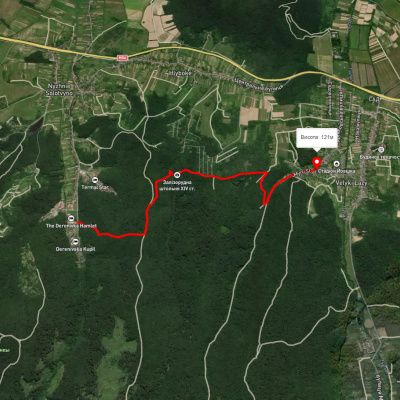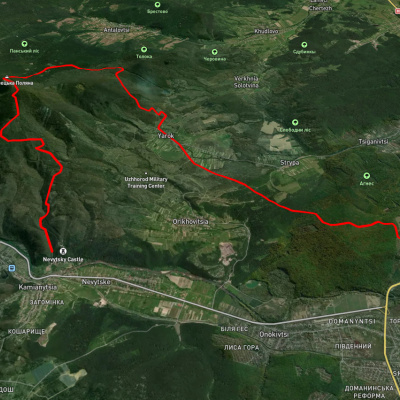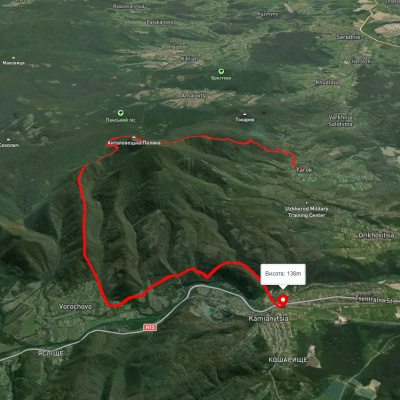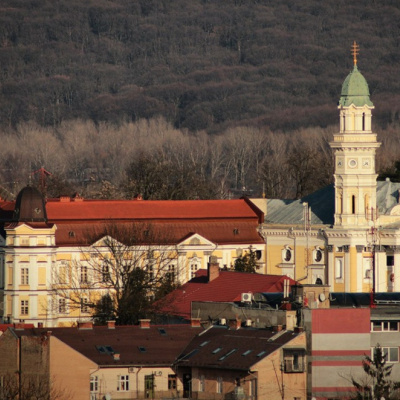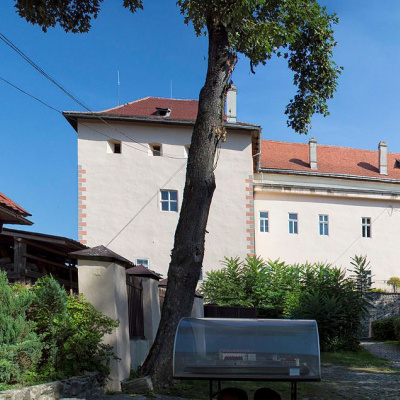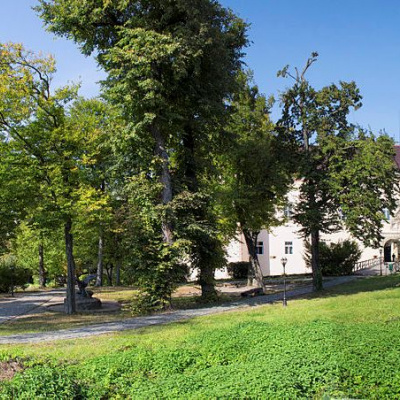Uzhhorod district
The district is located in the western part of Zakarpattia, bordering Perechyn, Mukachevo and Berehove districts. The district center, the city of Uzhhorod, is also the regional center of Zakarpattia region. The central administrative authorities of the district are located in Uzhhorod (125 thousand people). The westernmost point of Transcarpathia is located on the territory of the district: 22°09' east longitude; 48°27' north latitude (1.5 km from the village of Solomonovo), as well as the lowest point above sea level in the region (101 m above sea level), which is located near the village of Ruski Heyivtsi. Most of the district is located within the Transcarpathian lowlands, in the north it occupies a part of the Vyhorlat-Hutynskyi ridge and its foothills. The highest point of the Uzhhorod district is the Dunavka peak, which rises to 1018 meters and belongs to the Syniak ridge. The Tisa, Uzh, and Latorytsia rivers play a significant role in shaping the relief. In addition, there are many artificial canals, ponds and reservoirs in the lowlands.
In total, the district is home to about 76 different nationalities, including Ukrainians, Hungarians, Slovaks, Russians, Roma, and Jews. The main museums of the region are located in Uzhhorod: the local history castle museum, the museum of architecture and life, the art museum, memorial art museums, and the zoological museum.
The district's lands are famous for their European vineyards, from which local enterprises and master winemakers have long produced high-quality wines and cognacs. The Uzhhorod region is decorated with numerous exotic flora, with more than 300 species of exotic plants, including sakura, magnolia, Japanese quince, Nedzvetsky apple tree, lilac-leaved catalpa, and Himalayan pine.
The Uzhhorod district offers medieval castles and churches, monuments of landscape art, resorts with healing mineral and thermal waters, and tasting rooms.
A unique medieval castle in the village of Serednye is an extremely interesting architectural and historical monument in Uzhhorod district. The lonely dungeon tower keeps the secrets of its first owners, the gloomy knights of the Knights Templar, whose name made the great rulers of European countries tremble. It is said that it was here that they hid their wealth when the Hungarian king, at the request of the French Emperor Philip the Beautiful, ordered all the fortifications of the temple monks to be destroyed and the monks themselves to be imprisoned. After the collapse of the order in 1312, the castle passed into the hands of the monks of the Order of St. Paul. During the liberation war of the Hungarian people in 1703-1711, the castle was severely damaged. Another historical fact from the history of the castle is that its owner was the famous Hungarian hero Istvan Dobo. It was thanks to his courage that the stronghold of the Hungarian monarchs, the Eger fortress, was defended from the Turkish invasion.
On one of the hills surrounding the city of Uzhhorod is one of its ancient parts - Horyany. It is here that a small church-rotunda of St. Anne is located, which has no analogues in Ukraine in terms of its architectural parameters. There are only two similar rotundas in the world (both in Hungary). An interesting fact is that the walls of the small round church have eleventh-century frescoes created by artists representing the Italian Giotto school of art.
According to archaeological findings, the Uzhhorod district was densely populated in ancient times: sites of different periods, starting with the Stone Age, and medieval settlements were found almost near every village. The discovered Roman coins and jewelry testify to the lively trade between the population of the region and the Roman provinces of Pannonia and Dacia. The oldest Slavic settlements dating back to the sixth century were found in Uzhhorod and the villages of Haloch and Kholmok. In the XI-XIV centuries, the region was actively developed by the Hungarians, and the villages of Velyka Dobron, Velyki Heivtsi, Siurte, and others were founded.
There are many unique parks and monuments in the Uzhhorod region: Uzhhorod - Laudon Park, Pidzamkovyi Park, Nevytske - Wagner Park (castle), V. Lazy - Ploteni Park, Chertsey - Park of 1848. Undoubtedly, parks in the district existed in the Middle Ages, and their emergence is associated with such feudal lords as Ploteni and Drugety, who contributed to the emergence of parks by importing various plants exotic to our region from all over the world. This is evidenced by the fact that in 1701 there were 5 parks around the castle in Uzhhorod: Flower, Animal, Meadow, Crane and Pigeon. By the way, a 500-year-old plane tree, which, according to legend, was planted by Count Valentyn Druget himself, and a 300-year-old ash tree still grow in Uzhhorod.
There are many interesting facts associated with the history of Uzhhorod: it was here that deforestation was banned for the first time in Transcarpathia in 1631 (near the villages of Horyany, Nevytske, Kamianytsia, Korytnyany); and on April 24, 1646, the Uzhhorod Union was proclaimed. In Uzhhorod Castle, 63 Orthodox priests recognized the union with Catholicism. Thus, a new Greek Catholic Church was formed in Transcarpathia. In 1869, the first sawmill in Transcarpathia was established in Uzhhorod, and in 1872 the first railroad, the Uzhhorod-Chop, began operating here. In 1897, the first telegraphic connection between Uzhhorod and Budapest was established, and in 1902, the first power plant in the region, the Uzhhorod Power Plant, was put into operation. In 1907, the first theater was built in Uzhhorod.
The Uzhhorod Monastery (a Roman Catholic convent) and ancient churches are located in the region: Horyany, Uzhhorod, Derenkovtsi, Strumkivka, Palad Komarivtsi, as well as medieval castles: Uzhhorod (11th century), Nevytske (13th-17th centuries), Serednie (12th-18th centuries), and the aristocratic palaces of the Drugety and Ploteni families (ruins, Uzhhorod-Horyany). Uzhhorod Castle is the oldest of all the fortresses in Zakarpattia.
In 1322, the castle was transferred to the Italian Count Philip Druget. The Druget family owned the castle from 1322-1691. In 1691, Miklos Bercsenyi became the new owner of the castle and significantly rebuilt it. During the liberation war of the Hungarian people in 1703-1711, the castle was taken by the rebels. After 1711 the castle was transformed into a church gymnasium.
Nevytsky castle - first mentioned in the early fourteenth century as a stronghold of the local feudal front against the royal power of Charles Robert of Anjou. In the XIV century, the castle passed into the possession of the Druget family, who built a stone castle on the site of the wooden castle. In 1644, during the religious wars, the Transylvanian prince György II Rákóczi destroyed the castle.
It is interesting that the longest linden alley in Europe is located here (Nezalezhnist embankment, Uzhhorod).
Flora and fauna: Hungarian lilac, comfrey heart-shaped, Kochi cornflower, long-leaved cornflower, beautiful thyme, four-membered phytheuma, clove, Transcarpathian marigold, common snowdrop, Heifel saffron. Along with the local species, Uzhhorod region is also decorated with numerous exotic flora. There are more than 300 species of exotic plants here. From early spring to late fall, the flowering of some plants is replaced by others. It seems that the settlements dissolve in the flowering trees and bushes. These are such original plants as golden and greenish forsythia bushes, pale pink flowers of Japanese quince and pink flowers of Niedzwiecki apple trees, blood-red flowers of Florida apple trees and white flowers of Chinese apple trees, pink buds of Japanese sakura flowers, blond and reddish flowering shoots of chestnuts. There are also cypress trees, Himalayan pines, Douglas firs, evergreen boxwood, common scumpia ("wig tree"), lilac-leaved catalpa ("cigar tree"), and fluffy paulownia ("Adam's tree"). Speaking about exotic plants of Uzhhorod region, it is worth mentioning a tree from distant China - the magnolia ("cucumber tree"). There are several species of them in our region: the pink Sulanzha magnolia, the white Kobus magnolia, and the purple Lenne magnolia. By the way, science has proven that a magnolia flower has a temperature inside that is higher than the temperature of the surrounding air. Try to see for yourself by putting your hand to a magnolia flower.
The following animals are especially common in the Uzhhorod region: mole, weasel, ferret, hare, squirrel, muskrat, pheasant, quail, turtledove, pigeon, coot, woodpecker, gull, woodpecker, owl, stork, wild duck, heron. Among the reptiles, the steppe turtle, lizards, snake, and common viper are common here. Among the rare European insects found in the Uzhhorod region are the Alpine mustache, Apollo, proserpine, dead head, lesser saturnia, and mourning moth.
- Reformed Gothic Church (1332-1337, rebuilt in 1667, 1762, 1910) in the village of Batfa;
- Noble palace of the Ploteni family with a park (XIX century) in the village of Velyki Lazy;
- Church in the village of Haloch;
- Church (XVIII century) in the village of Hlyboke;
- Khrushchev's dacha, near the village of Huta;
The former Transcarpathian dacha of the party leader is located in the middle of the forest with extremely picturesque landscapes; - Nevytskyi Castle (XII-XIV centuries), near the village of Kamianytsia;
- Church in the village of Kontsovo;
- Church (XVII century) in the village of Onokivtsi;
- Reformed Church (1729) in the village of Palad-Komarivtsi;
- Church of St. George (1912). Yurii (1912) with paintings by J. Bokshai in the village of Rativtsi;
- Templar Castle (XII-XIII centuries) in the village of Serednie;
- Wine cellars in the monolithic rock (XVI century) in Serednie village;
- Church of Ss. Cyril and Methodius (1930) in the village of Storozhnytsia;
- The Church of the Exaltation of the Holy Cross (XV century) in the village of Syurte;
- Reformed Church (XIX century) in the village of Syurte;
- Reformed Church (XV-XIX centuries) in the village of Tarnivtsi;
- Church (XVIII century) in the village of Kholmtsi;
- Church (XV, XIX centuries) in the village of Chaslivtsi;
- Manor house (XVIII-XIX centuries) and arboretum (XX century) in the village of Chertezh. It belonged to the governor of Subcarpathian Rus Kostiantyn Hrabar. The Renaissance fireplace interiors and vault details of the eighteenth and nineteenth centuries, steel columns on the porch, and the family chapel have been preserved. The park has several types of valuable plants: berry yew, Canadian yew, tulip tree, 3 types of magnolias, vinegar tree, black pine;
- Church (eighteenth and nineteenth centuries) in the village of Shyshlivka;
- Church of the Nativity of the Blessed Virgin Mary (1802) in the village of Yarok;
- An ostrich farm in the village of Kholmets.
Які туристичні (пішохідні) маршрути проходять через/біля Uzhhorod district?
Пропонуємо пройти такі туристичні (пішохідні) маршрути через/біля Uzhhorod district: Пішохідний маршрут "Метро Карпат", с. Кам'яниця, через Анталовецьку Поляну, с. Ярок до м. Ужгород, с. Ярок, через Анталовецьку Поляну до с. Невицьке, с. Ярок, через Анталовецьку Поляну до с. Ворочово, с. Кам'яниця – Анталовецька Поляна – с. Кам'яниця, Лумшори Невицький замок
